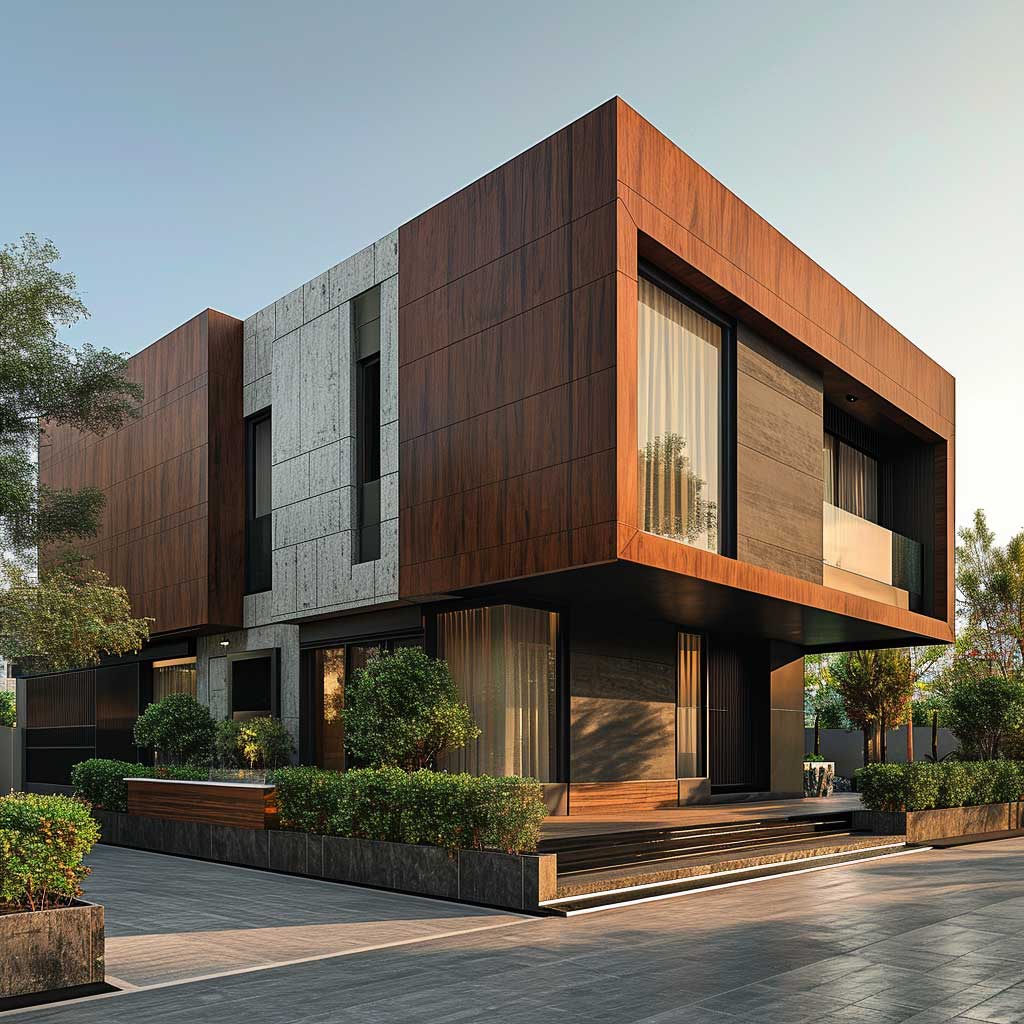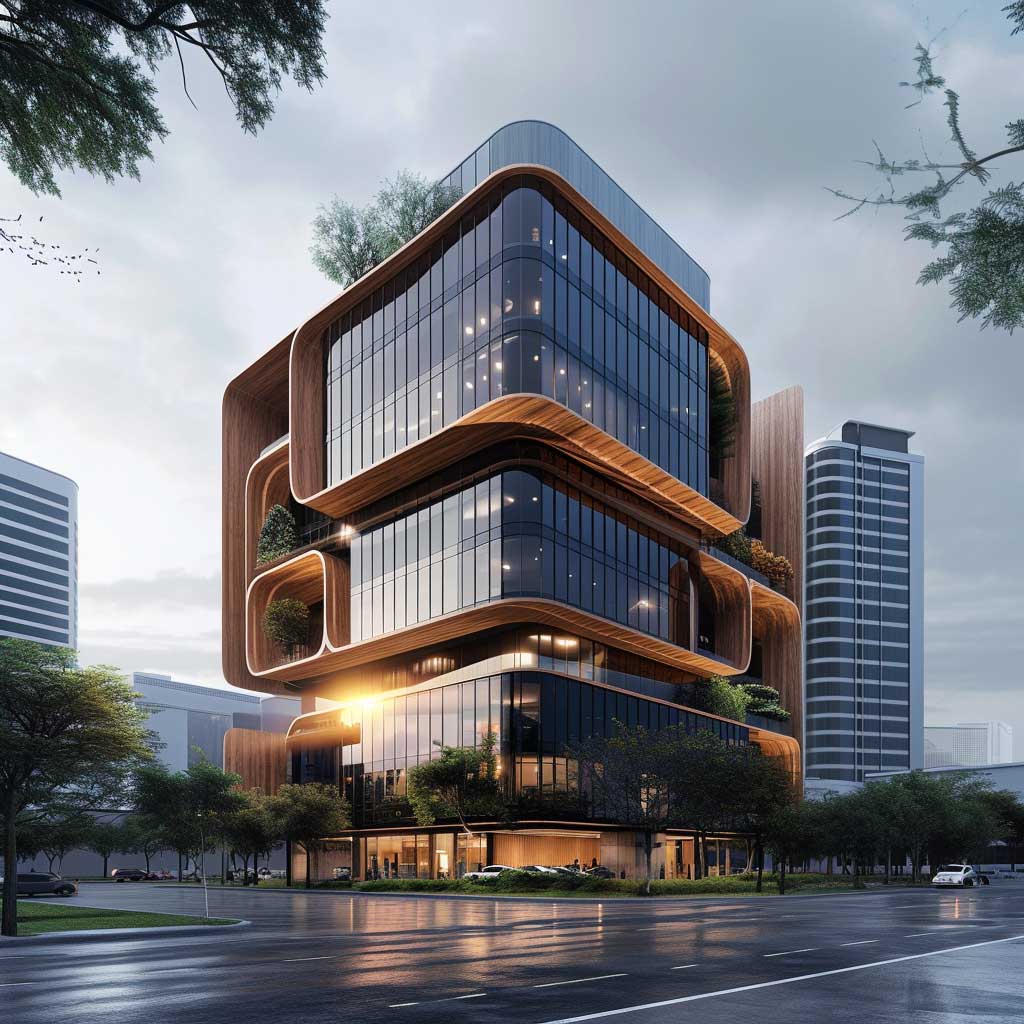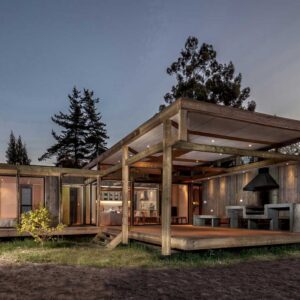Exploring the realm of architectural beauty, wooden ACP (Aluminum Composite Panel) sheets have emerged as a forefront choice for modern design enthusiasts. Their versatility, durability, and aesthetic appeal make them a popular option for adding a touch of sophistication and natural charm to various architectural projects. Whether it’s for exterior cladding or interior design, the integration of wooden ACP sheet designs can dramatically transform the ambiance of any space, making it more inviting and visually appealing. This piece delves into the world of wooden ACP sheets, showcasing their potential in elevating architectural designs.
Innovative Interiors with Wooden ACP Sheet Accents




The realm of interior design is continually evolving, with new trends and materials surfacing each year to redefine our living spaces. One such material that has recently garnered significant attention is the wooden Aluminum Composite Panel (ACP) sheet. Known for its robustness and aesthetic versatility, wooden ACP sheet design is now being increasingly used to create innovative interior spaces that are both functional and visually appealing.
When one thinks of wooden materials in interior design, traditional uses such as furniture and flooring might come to mind. However, wooden ACP sheets break this conventional mold, offering a fresh and modern twist. These sheets are made by bonding two sheets of aluminum to a non-aluminum core, often polyethylene (PE) or mineral-filled fire-resistant (FR) core. The aluminum surface is then coated with a decorative finish that mimics the look of natural wood. The result is a material that combines the durability and ease of maintenance of metal with the warm, inviting aesthetic of wood.
In contemporary interiors, wooden ACP sheets are being used in a multitude of creative ways. One popular application is in wall cladding. Here, these sheets serve as a striking focal point in a room, whether they’re used to cover an entire wall or just a section. The natural wooden finish adds warmth to the space, creating a cozy and welcoming atmosphere. It’s a clever way to introduce a natural element into modern design, blending rustic charm with sleek, contemporary lines.
Furthermore, wooden ACP sheets are not just limited to walls. They are being innovatively used in ceiling designs, furniture, and even in creating unique decorative art pieces. In ceiling applications, they can add depth and dimension to a room, especially when used in coffered or suspended ceiling designs. For furniture, wooden ACP sheets provide a durable and stylish surface for tables, cabinets, and even accent pieces.




The versatility of wooden ACP sheets extends to the variety of finishes and textures available. From deep, rich mahogany tones to light, Scandinavian-style birch effects, there is a plethora of options to suit any interior design theme. This versatility makes wooden ACP sheets a favorite among interior designers and homeowners looking to add a personal touch to their spaces.
Durability is another key feature of wooden ACP sheets. Unlike traditional wood, which can be susceptible to damage from moisture, pests, or wear and tear over time, wooden ACP sheets maintain their appearance without the need for frequent maintenance. This makes them an excellent choice for high-traffic areas in homes or commercial spaces where durability and ease of maintenance are key considerations.
In terms of installation, wooden ACP sheets offer a straightforward and efficient process. They can be easily cut, bent, and shaped to fit any design requirement, making them suitable for custom designs. This ease of installation is particularly beneficial in fast-paced construction and renovation projects where time is of the essence.
The eco-friendly aspect of wooden ACP sheets is also worth noting. As the focus on sustainable design grows, these sheets provide an environmentally responsible option. They mimic the appearance of wood without the need for deforestation, thus contributing to conservation efforts. Additionally, the energy required to produce aluminum is significantly less than that needed for processing steel, making it a more energy-efficient choice.
In conclusion, the integration of wooden ACP sheet design in interior spaces is a testament to the innovative spirit of modern design. These sheets offer a unique combination of beauty, durability, and versatility, making them an ideal choice for creating interiors that are not only aesthetically pleasing but also sustainable and functional. As we continue to explore new materials and design techniques, wooden ACP sheets stand as a shining example of how innovation can transform our living and working environments.
Revolutionizing Urban Architecture with Wooden ACP Sheet Designs




Urban architecture is a canvas that reflects the technological advancements and aesthetic sensibilities of its time. In recent years, one of the most notable introductions into this dynamic field is the use of wooden Aluminum Composite Panel (ACP) sheets. This innovative material is revolutionizing urban architecture by offering a unique blend of contemporary design, sustainability, and practicality.
Wooden ACP sheets are a product of modern engineering, a fusion where nature meets technology. These panels consist of two aluminum sheets bonded to a non-aluminum core, typically polyethylene or a fire-resistant compound. The outer layer is then finished with a decorative wooden pattern. This manufacturing process results in a material that combines the lightweight and durable qualities of aluminum with the aesthetic appeal of wood. The outcome is a versatile building material that can withstand urban environmental challenges while maintaining its visual appeal.
The impact of wooden ACP sheet design in urban architecture is profound and multifaceted. One of the most apparent influences is the aesthetic transformation it brings to cityscapes. In a world where concrete and glass have long dominated urban architecture, the wooden appearance of ACP sheets introduces a refreshing and much-needed touch of nature and warmth. This shift is not just about appearances; it represents a deeper change in the way we approach urban design – a move towards integrating natural elements into our urban environments for a more harmonious coexistence.
Wooden ACP sheets are particularly favored in façade cladding. They provide architects with a way to break the monotony of traditional building materials. The sheets can be used to create intricate patterns and designs, allowing for a level of creativity and customization previously unattainable with traditional façade materials. This flexibility opens up a world of possibilities, from sleek and modern designs to more organic and fluid forms, mirroring the diversity and dynamism of city life.




Beyond aesthetics, wooden ACP sheets offer practical benefits that are essential in urban architecture. Their durability is a key feature, as they are resistant to weathering, corrosion, and UV radiation, ensuring that the aesthetic integrity of buildings is preserved for years. This longevity is particularly important in urban settings, where buildings are exposed to a range of environmental stressors. Additionally, these sheets are lightweight, which reduces the load on building structures and simplifies the construction process, a critical factor in densely populated urban areas where construction logistics can be challenging.
Another significant aspect of wooden ACP sheets in urban architecture is their contribution to sustainable building practices. As concerns about environmental impact and sustainability grow, the construction industry is under increasing pressure to find eco-friendly solutions. Wooden ACP sheets answer this call in several ways. Firstly, they mimic the look of wood without contributing to deforestation. Secondly, the energy efficiency in their production, as compared to other building materials, is notable. Lastly, their durability and low maintenance requirements mean a longer lifespan and reduced need for replacements, which contributes to resource conservation.
Incorporating wooden ACP sheets in urban architecture also aligns with the growing trend of green building design. These sheets can be part of a larger strategy to make buildings more energy-efficient and environmentally friendly. Their thermal insulation properties can contribute to reducing heating and cooling needs, thereby lowering energy consumption and carbon footprint.
In conclusion, the introduction of wooden ACP sheet design in urban architecture marks a significant step forward in the evolution of building design. These sheets are not just transforming the aesthetic landscape of our cities but are also redefining what is possible in terms of sustainability, durability, and design flexibility. They symbolize a new era in urban architecture, one that embraces innovation and seeks harmony between the built environment and the natural world. As we continue to reimagine our urban spaces, materials like wooden ACP sheets will undoubtedly play a crucial role in shaping the future of city living.
Transforming Exterior Aesthetics with Wooden ACP Sheets in Architecture




In the ever-evolving landscape of architectural design, the pursuit of new materials that combine functionality with aesthetic appeal is constant. The introduction of wooden Aluminum Composite Panel (ACP) sheets has marked a significant milestone in this quest. These innovative materials are redefining the possibilities in exterior architectural design, marrying the timeless elegance of wood with the resilience and versatility of aluminum composites.
Wooden ACP sheets are a unique amalgamation of style and substance. At their core, these sheets consist of two aluminum layers bonded to a non-aluminum core, creating a material that is remarkably lightweight yet sturdy. The exterior aluminum layer is treated with a finish that replicates the texture and appearance of natural wood. This ingenious design enables architects and designers to incorporate the warm, inviting aesthetic of wood into their projects without compromising on durability and maintenance.
The use of wooden ACP sheets in exterior architecture is a testament to the material’s adaptability and aesthetic versatility. In a world where first impressions are pivotal, the facade of a building plays a crucial role. Wooden ACP sheets offer a fresh and modern approach to building exteriors, standing out in urban landscapes often dominated by glass, steel, and concrete. The wood finish brings a touch of nature to these structures, creating a striking contrast that blends modernity with the natural world.
This contrast is more than just visually appealing; it represents a shift towards more sustainable and environmentally conscious design practices. Wooden ACP sheets provide the look and feel of real wood without the associated environmental impact. This is particularly significant in the context of deforestation and the need for sustainable building materials. By choosing wooden ACP sheets, architects and developers can reduce their ecological footprint while still achieving the desired aesthetic.




The benefits of wooden ACP sheets extend beyond their environmental friendliness. Their physical properties make them an ideal choice for exterior applications. These sheets are resistant to weathering, corrosion, and UV radiation, ensuring that the facade remains pristine and vibrant for years. This longevity is crucial in exterior applications where materials are constantly exposed to the elements. Moreover, their lightweight nature simplifies installation and reduces the structural load on buildings, an essential consideration in modern construction.
In terms of design flexibility, wooden ACP sheets offer unparalleled opportunities. They can be cut, bent, and shaped to fit any architectural design, allowing for a high degree of customization. This flexibility is a boon for architects who wish to push the boundaries of traditional design. Whether it’s for creating intricate patterns, curves, or unique geometric shapes, wooden ACP sheets can be adapted to meet various design requirements.
The integration of wooden ACP sheets in architecture is not just about aesthetic innovation; it also reflects a broader trend towards multifunctional materials in construction. These sheets contribute to the thermal insulation of buildings, enhancing energy efficiency. This characteristic is particularly valuable in the context of growing concerns about energy consumption and the need for green building practices.
In conclusion, wooden ACP sheets are transforming the face of exterior architecture, offering a harmonious blend of beauty, durability, and sustainability. Their ability to mimic the natural charm of wood while providing the strength and versatility of aluminum composites makes them a standout choice in modern architectural design. As the industry continues to explore new ways to create impactful, sustainable, and visually stunning buildings, wooden ACP sheets will undoubtedly play a pivotal role in shaping the architectural landscapes of the future.
The versatility and beauty of wooden ACP sheet designs offer an endless array of possibilities for modern architectural and interior design. Their ability to blend with various styles, from contemporary to traditional, makes them a choice par excellence for designers aiming to create spaces that are not only aesthetically pleasing but also sustainable and durable. As we continue to explore innovative ways to incorporate natural elements into our living spaces, wooden ACP sheets stand out as a material that promises both style and functionality, revolutionizing the way we think about modern design.












